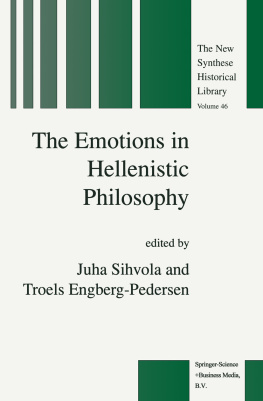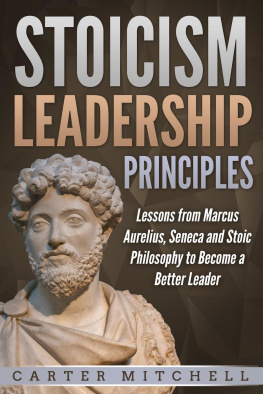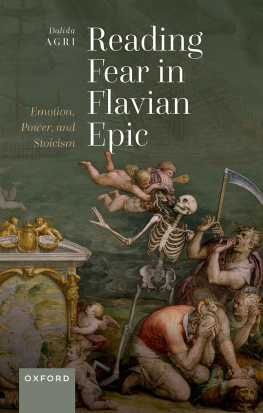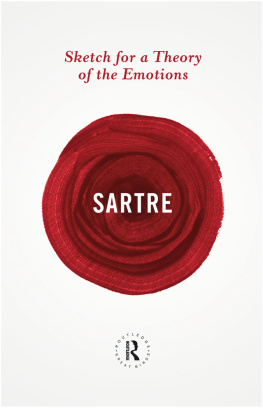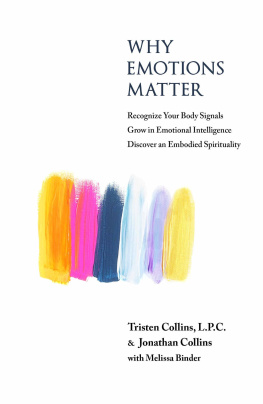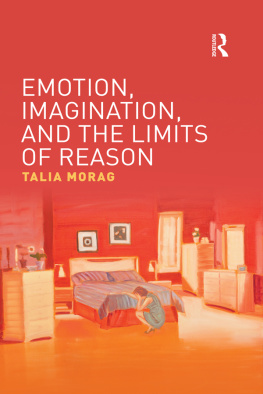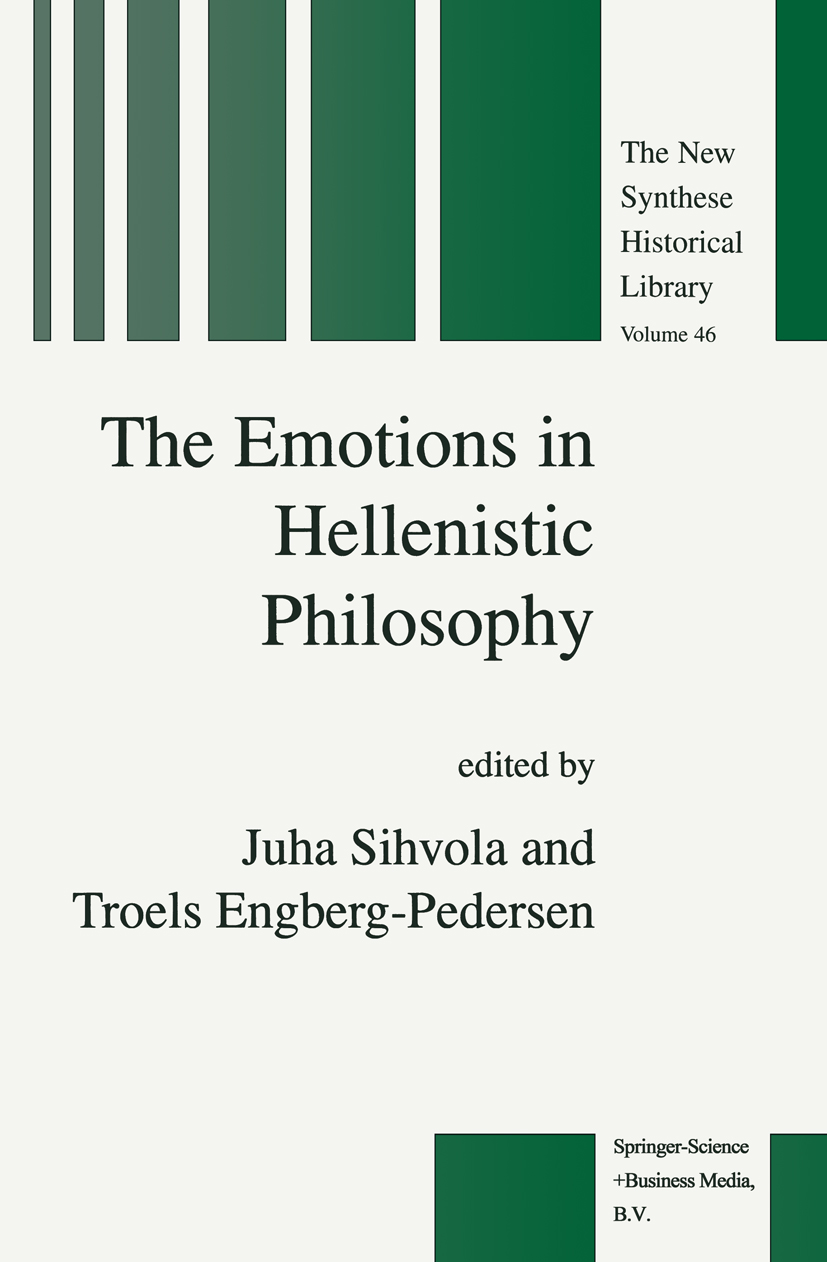Since the nineteen-seventies, the emotions have been among the most intensively debated topics in the philosophy of mind and action. This philosophical reflection has led to thoroughgoing criticism of certain stereotypical views, e.g. that emotions are irrational bodily and psychic movements which just happen to people because of their psychophysical constitution. According to these views, they are essentially passive reactions to external stimuli, which give rise to certain behavioral tendencies but cannot be much modified through teaching and argument.
Recent philosophical literature on the emotions has paid attention to the fact that even the everyday use of the paradigmatic instances of emotion-terms, such as anger, fear, pity, grief, and joy, involve prominent features that are neglected in the notion of emotion as an irrational feeling or passive psychophysical reaction. First, emotions are intentional; they have an object at which they are directed or about which they are. Secondly, emotions are closely related to the representational and evaluative acts of those undergoing them. Thirdly, occurrent emotions are regarded as adequate or inadequate reactions. The emotions seem to involve elements that are often understood as functions of reason: cognition, evaluation, judgment.
In spite of a growing recognition of the intentionality of the emotions and the role of cognition in them, the notion of emotion has remained quite controversial in modern discussions. Cognitive philosophical theories concerning the emotions can roughly be divided into judgment theories, which more or less identify the emotions with the judgment involved, and componential theories, in which the emotions are understood as complexes of cognitions, desires, and affects. Discussion is still much at what Aristotle would have called a dialectical stage. Analyses concerning the emotions have been focused on what is designated by the paradigmatic instances of emotion-terms, but no consensus has been reached either on the overall definition of the notion of emotion or on the general demarcation lines of discussion.
In such a situation, it is not surprising that the ancient discussions of the path have been thought to be directly relevant for philosophical analyses of the emotions. However, the conceptual tools provided by ancient philosophy do not at first sight seem too promising for a theory of what we would call the emotions. The basic meaning of the term pathos is not emotion; pathos stands for a much more general notion which covers all accidental and contingent changes that happen to somebody in contrast to what he or she actively does. The broad sense of pathos , familiar from Aristotles Categories and Metaphysics , comes out in translations such as affection, experience, undergoing or attribute, as opposed to emotion or even passion. However, both Plato and Aristotle also focus attention on path in the sense of the emotions as we understand them, although it may be questioned whether the discussions in the Philebus and the Rhetoric amount to actual theories of the emotions.
By contrast, there is no doubt that the Stoic doctrine of the path is a systematic theory in which the term pathos is given a strict technical meaning. Moreover, the class of psychic phenomena which the Stoics call path clearly refers to what we call emotions, but it also considerably revises commonsense beliefs both ancient and modern about them. It is questionable whether these path include everything that we or the ancient contemporaries of the Stoics recognized as emotions, and accordingly, whether all emotions are really extirpated in the Stoic ideal of apatheia. In fact, the Stoic doctrine, around which the Hellenistic discussions of the emotions to a large extent circled, drew heavy criticism from early on. On the other hand, it has also been praised for achieving a level of sophistication and precision not even matched in the modern literature on the topic (see Sorabji below).
Scholarly interest in the Hellenistic theories of the emotions has been lively during the last couple of decades. But even though several excellent articles on the topic have appeared and the emotions have been perceptively discussed in volumes on Hellenistic ethics and philosophy of mind, no book-length comprehensive treatment has been available so far. This collection aims to fill this gap in the literature and to give a many-sided overview of the Hellenistic theories of the emotions, their background, the main controversies, and the later developments. The idea for the volume originated at a conference on the Hellenistic philosophy of mind organized by the Philosophical Society of Finland in Helsinki in 1994. A considerable number of papers at the conference focused on the analysis of the emotions and seemed to form a nucleus for a volume of essays. However, in order to gain comprehensiveness, several prominent scholars in the field were invited to contribute new essays to the volume. The editors are grateful to all those who accepted or who allowed us, in a few cases, to reprint older essays. In the end, the volume turned out to be a little less complete than planned, with a less than wholly adequate coverage of non-Stoic views like those of Cyrenaics and Epicureans. Still, there are enough essays to balance the emphasis on the Stoics.
As already noted, practically all Hellenistic thought on the emotions must be understood in relation to the early Stoic analysis of the path. The Chrysippean doctrine gave rise to the main controversies: What kind of background psychology, a unitary or a tripartite soul, is needed to explain the emotions? Are the emotions fonctions of reason or of some lower parts or levels of the soul? What kind of therapy is needed to modify or extirpate the emotions? What, if any, is the possible value of the emotions in a flourishing life? The intrinsic centrality of Stoic analyses of the emotions within Hellenistic thought is clearly visible in the structure and contents of this volume.
The emergence of the philosophical analysis of emotions in Plato and Aristotle is outlined by Simo Knuuttila and Juha Sihvola. Their aim is to show that the Hellenistic discussions did not come out of the blue but had deep roots in classical philosophy. They also pay attention to interesting reflections by Plato and Aristotle on the feeling aspect of emotion which was less discussed in the Hellenistic period.
With the scene thus set, Tad Brennan presents a detailed introduction to the early Stoic theory of the emotions, as well as a critical survey of a few areas of disagreement among modern interpreters of the doctrine. This is followed by three articles, by John Cooper, Christopher Gill, and Richard Sorabji, which trace the later development and criticisms of the Stoic theory from different points of view and reach rather different conclusions. Cooper argues that Galen unfairly represents Posidoniuss psychology as being much more Platonist than it actually was. To a large extent it was consistent with orthodox Stoicism. According to Cooper, Posidonius understood the path as functions of the rational faculty that express the agents beliefs of what is worth reacting to and acting for, but, differing from Chrysippus, he thought that some of the force of the impulse derives from an independent non-rational power which resembles Platonic appetite or spirit. Thus, Posidoniuss main intention would have been to preserve the basic structure of the Stoic doctrine against criticism.

